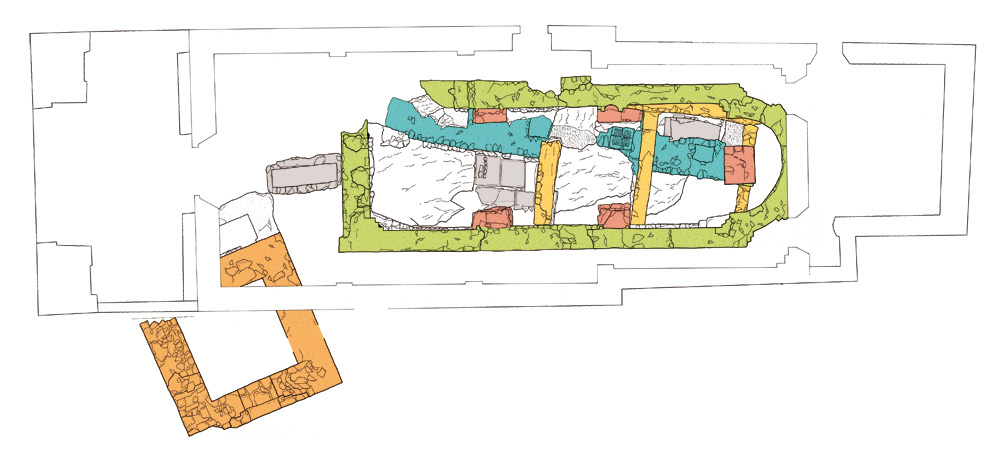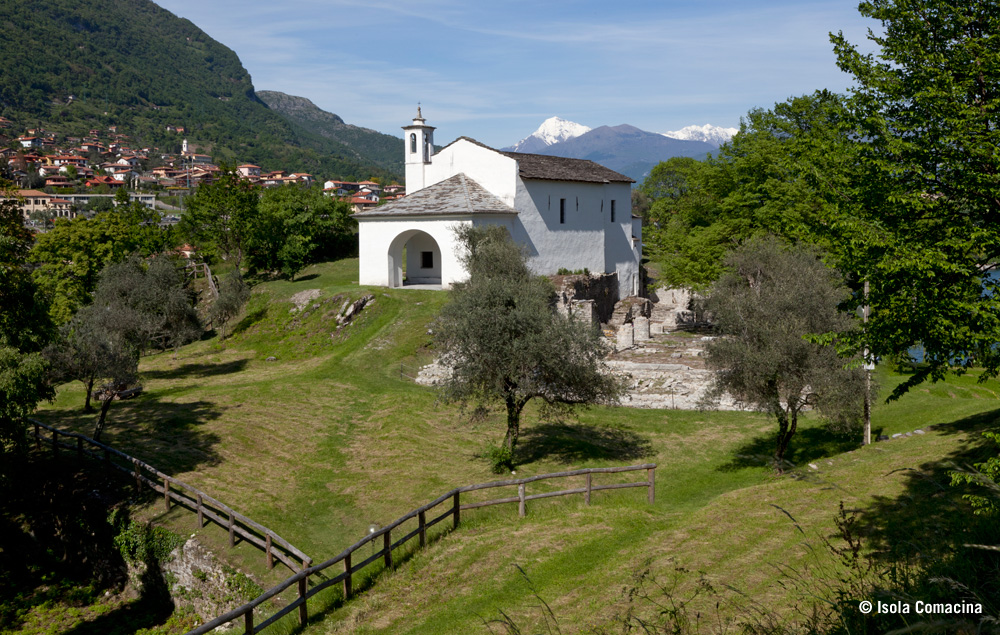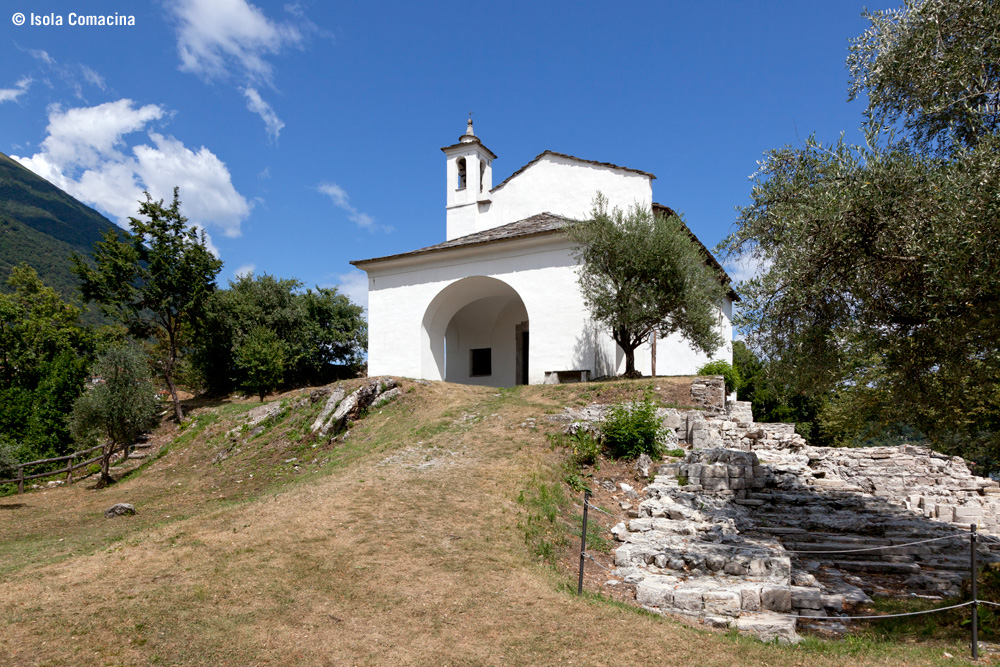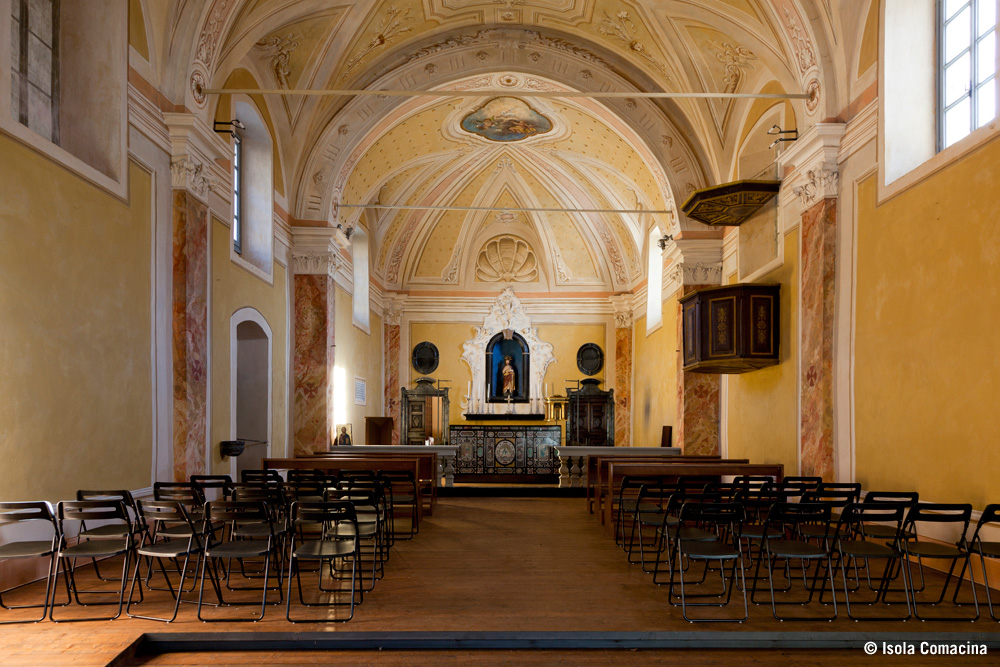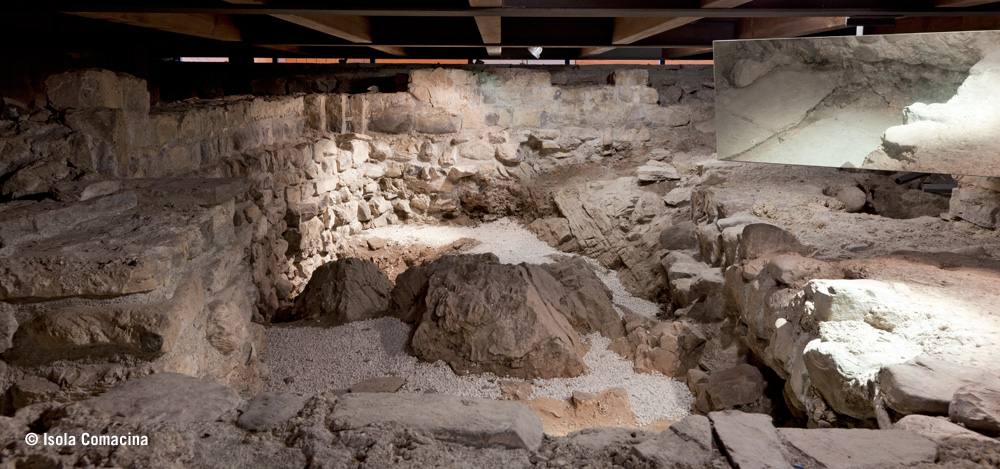The church of St. John the Baptist
First Excavation Campaign
Archaeological investigations have been carried out inside and around the church. Excavations between 1958 and 1963, directed by L. M. Belloni, unearthed the remains of at least three earlier religious buildings built here since the Early Middle Ages.
Description
The first building erected in this area, which dates to Roman times, was probably a patrician villa or sanctuary. A small church was built during the Early Middle Ages.
The church was demolished in 1169 by the rival city of Como, allied with Frederick I Barbarossa. Excavations conducted by Belloni uncovered the walls of the church (13.5 x 4 m), built on a levelled surface of the rocky outcrop on top of the remains of earlier Roman and late Roman buildings. Several graves were excavated both inside
and around the church.
Legend has it that at the end of the fifteenth century an oratory was built on the ruins of the old church. It is probably this that Feliciano Ninguarda, bishop of Como, describes during his pastoral visit of 1592. It consisted of an open portico and barrel vaulted chapel, enclosed within an iron fence.
By the time of Bishop Lazzaro Carafino’s pastoral visit of 1635 the church had been entirely reconstructed as a closed hall, divided into three aisles with a rectangular apse. The bell-tower was built between 1670 and 1675. The building you visit today is similar to that described above. Inside the building you can see eighteenth century fittings and a late nineteenth century pictorial decoration.
Recent Research Activity
A survey campaign and several archaeological on site investigations in 1998-99 preceded the restoration of the building, completed in 2008. The works fell beneath the blanket of a broad trust agreement, the “Magistri Comacini” (A.Q.S.T.), for the enhancement of the territory.
The church was subsequently consecrated and reopened for worship.
to display
Archaeological Sites

